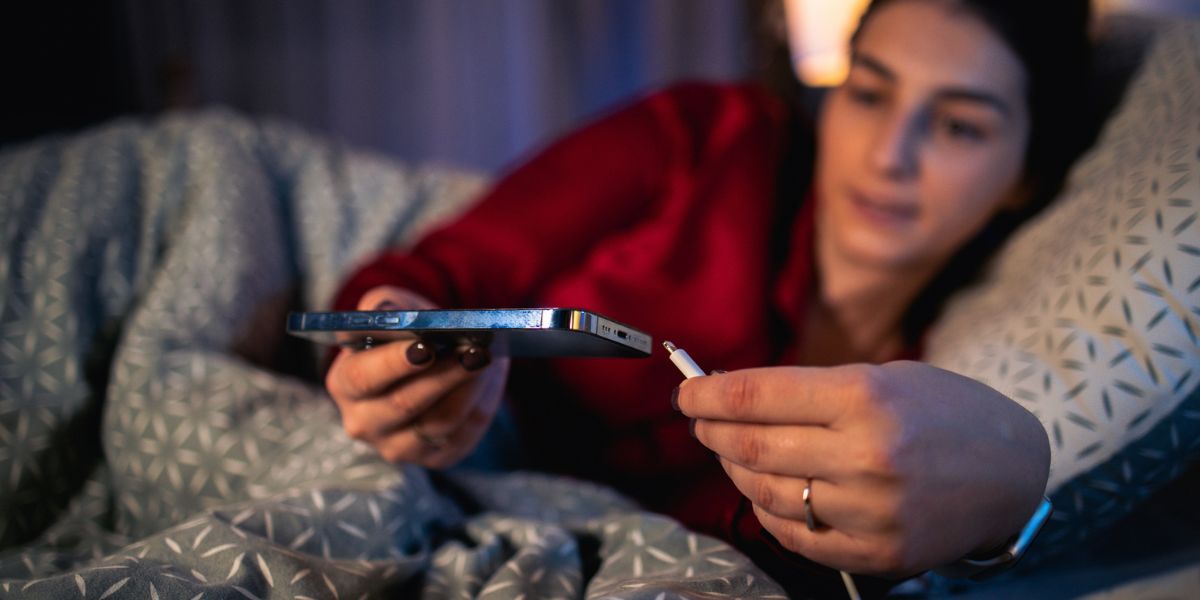Leaving modern devices plugged in continuously might seem harmless, but it can lead to safety hazards, increased energy consumption, and reduced device lifespan. Here’s what you need to know.
🔌 Is Overcharging a Problem?
While it’s true that charging to 100% and leaving a device plugged in overnight isn’t ideal for battery longevity, it’s not the end of the world especially with modern devices.
Most newer phones, laptops and chargers come with built-in battery management systems that automatically stop charging at full capacity or slow the charge rate significantly to reduce chemical stress and heat. Some even delay the final 10% until just before you typically wake up, based on usage patterns.
🔋 Battery Health and Device Longevity
| Charging Behaviour | Battery Life | Capacity Over Time | Heat | Chemical Stress |
| 0–100–0 (Full Cycles) | Significantly reduced lifespan due to extreme cycling | Rapid capacity drop after fewer cycles (approx. 300–500 full cycles) | High heat generation during both charge and discharge | High: severe stress on both electrodes; more side reactions and faster solid electrolyte interphase (SEI) layer growth |
| 100% Constantly (Full Charge) | Moderately reduced lifespan due to high voltage | Gradual capacity fade; risk of long-term degradation | Moderate heat | Moderate to high: high-voltage stress accelerates oxidation and electrolyte breakdown |
| 40–80% (Shallow Cycles) | Extended lifespan (potentially over 1,000 shallow cycles) | Slower capacity loss, more consistent performance | Minimal | Low: minimal electrochemical wear; stable SEI and reduced stress on electrode materials |
⚠️ Ditch Dodgy Cables and Adapters
Not all charging cables are created equal, and using the wrong one can be a real hazard. Cheap or counterfeit cables often lack essential safety features, which can lead to:
- Overheating: Inferior insulation or connectors can cause the cable to overheat, increasing the risk of fire
- Device Damage: Inconsistent power delivery can harm your device’s battery or charging port
- Electrical Hazards: Poorly made cables can fray, short out, or even give you an electric shock
Stick to manufacturer-approved or certified third-party cables. Look for certifications like USB-IF or MFi (Made for iPhone/iPad) for peace of mind. If a cable looks worn out or has exposed wires, toss it out immediately.
A few dollars saved on a cheap cable isn’t worth the risk to your safety or your tech.
⚡ Not All Chargers (or Cables) Are Equal
The charging speed is dictated by a conversation between your device, the charger, and sometimes even the cable. The device itself will limit how much power it draws. So even if the charger can pump out 100W, a phone that only needs 10W won’t try to take more. However, if the cable can’t even safely handle 10W, that’s where problems start.
- Voltage and current limits set by your device
- Fast charging protocols like USB Power Delivery (USB-PD), Qualcomm Quick Charge, and others
- Battery management systems (BMS) that protect against overheating or overcharging
If all three (device, charger, and cable) support the same protocol, the charger can deliver higher wattage safely. Some chargers only deliver basic 5W charging, while others can push 20W, 65W, or even 100W. Similarly, not all cables are built to carry high power, especially older or cheaper ones.
Specs For Nerds
| USB Type / Protocol | Voltage (V) | Current (A) | Power Output (W) | Supported Features / Notes |
|---|---|---|---|---|
| USB 2.0 (Standard) | 5V | 0.5A | 2.5W | Basic data and charging; very slow |
| USB 3.0 / 3.1 | 5V | 0.9A | 4.5W | Improved data speed, minor boost in charging |
| USB Battery Charging 1.2 | 5V | 1.5A | 7.5W | Common on older phones and tablets |
| USB-C (Basic) | 5V | 3.0A | 15W | Faster charging; supports reversible connector |
| USB Power Delivery (USB-PD) | 5V to 20V | 0.5A to 5.0A | Up to 100W | Dynamic power negotiation; used in laptops and high-end phones |
| Qualcomm Quick Charge 2.0 | 5V / 9V / 12V | Up to 3A | Up to 18W | Used in many Android devices |
| Qualcomm Quick Charge 3.0 | 3.6V–20V (dynamic) | Up to 3A | Up to 18W | More efficient version of QC2.0 with finer voltage steps |
| Qualcomm Quick Charge 4/4+ | Up to 20V | Up to 5A | Up to 100W | Compatible with USB-PD; includes safety features |
| Apple 2.4A Charging | 5V | 2.4A | 12W | Common for iPads and iPhones with USB-A to Lightning |
| Samsung Adaptive Fast Charging | 5V / 9V | Up to 2A | Up to 18W | Samsung’s proprietary fast charging tech |
🔥 Fire Hazards
While most devices are safe, poor charging habits can lead to fires, especially with large lithium-ion batteries.
- Small devices: Always charge on a hard surface, not on beds or couches. Keep away from flammable items and direct sunlight.
- Large batteries (e-bikes, scooters): Charge outside or in a garage, never indoors. Only use the manufacturer’s charger and avoid direct sunlight.
Using quality gear can greatly reduce the risk.
Other Types of Batteries
| Battery Type | Common Uses | Pros | Cons | Best Practices |
| Lithium-Ion (Li-ion) | Phones, laptops, EVs | High energy density, fast charging | Sensitive to heat and overcharging, fire risk | Keep between 40-80%, avoid heat, use quality charger |
| Nickel-Metal Hydride (NiMH) | AA rechargeables, cameras, hybrids | Stable, safer than Li-ion | Lower capacity, memory effect | Occasionally fully discharge, ideal for low-drain |
| Nickel-Cadmium (NiCd) | Power tools, older electronics | Long life, tough in harsh conditions | Toxic (cadmium), heavy, memory effect | Fully discharge now and then, recycle properly |
| Alkaline (Single-use) | Remotes, clocks, torches | Long shelf life, widely available | Not rechargeable, environmental impact | Replace responsibly, switch to rechargeables if possible |
| Lead-Acid | Cars, backup power | Inexpensive, high output | Heavy, slow charging, corrosive | Keep terminals clean, recharge if idle |
Batteries are meant to be used. If hitting 100% gives you the confidence to get through a long day without scrambling for a charger, that’s a win. The small drop in long-term battery health is usually worth the convenience and productivity you gain.
In many cases, the cost of replacing a battery down the line (or even the entire device) is small compared to the value of having a reliable, fully charged device when you need it most. So yes, take care of your battery, but don’t lose sleep over every overnight charge.









